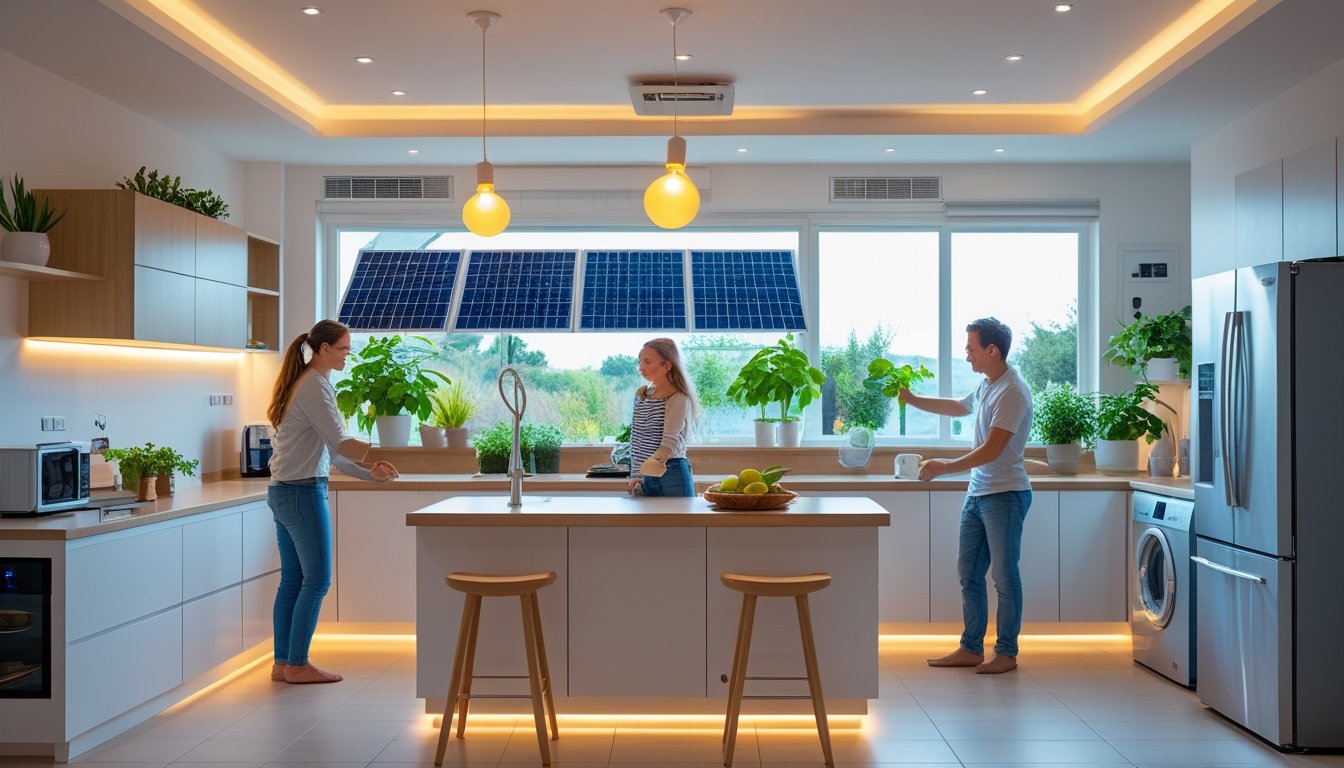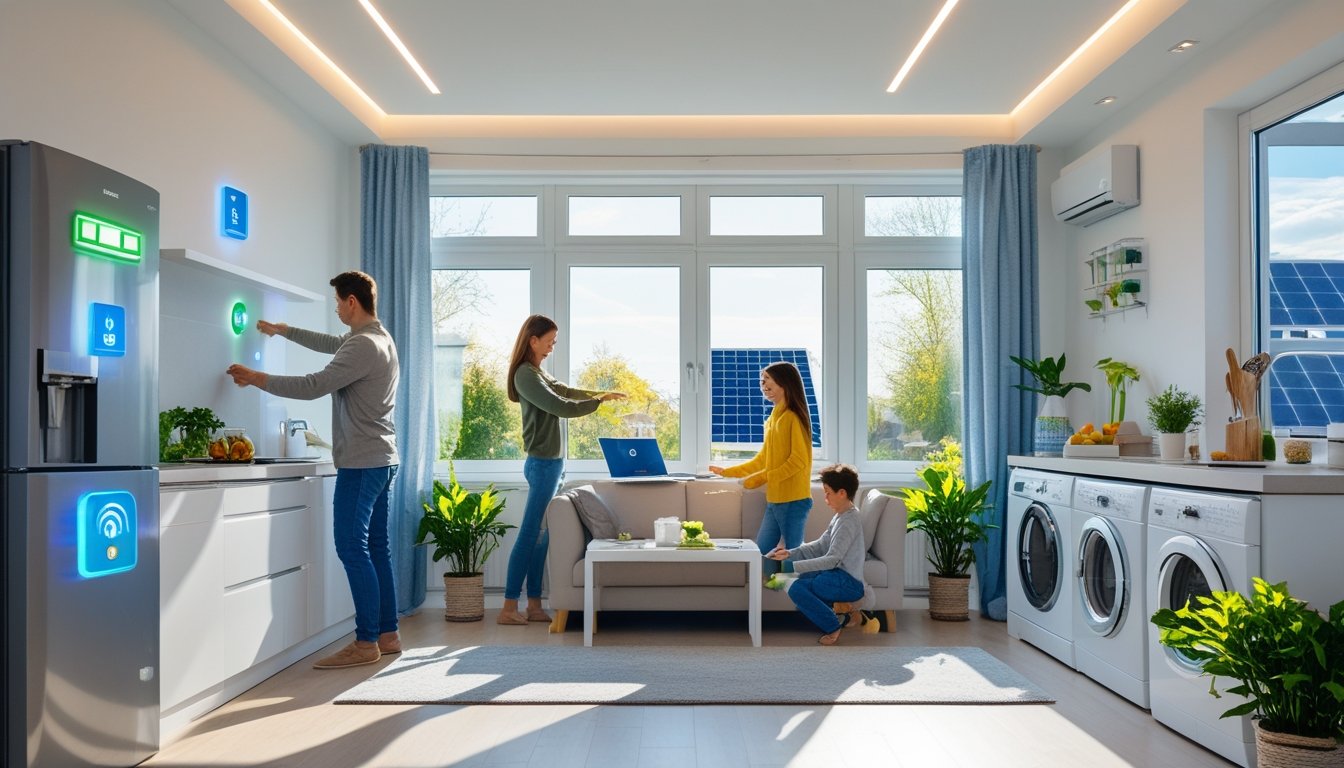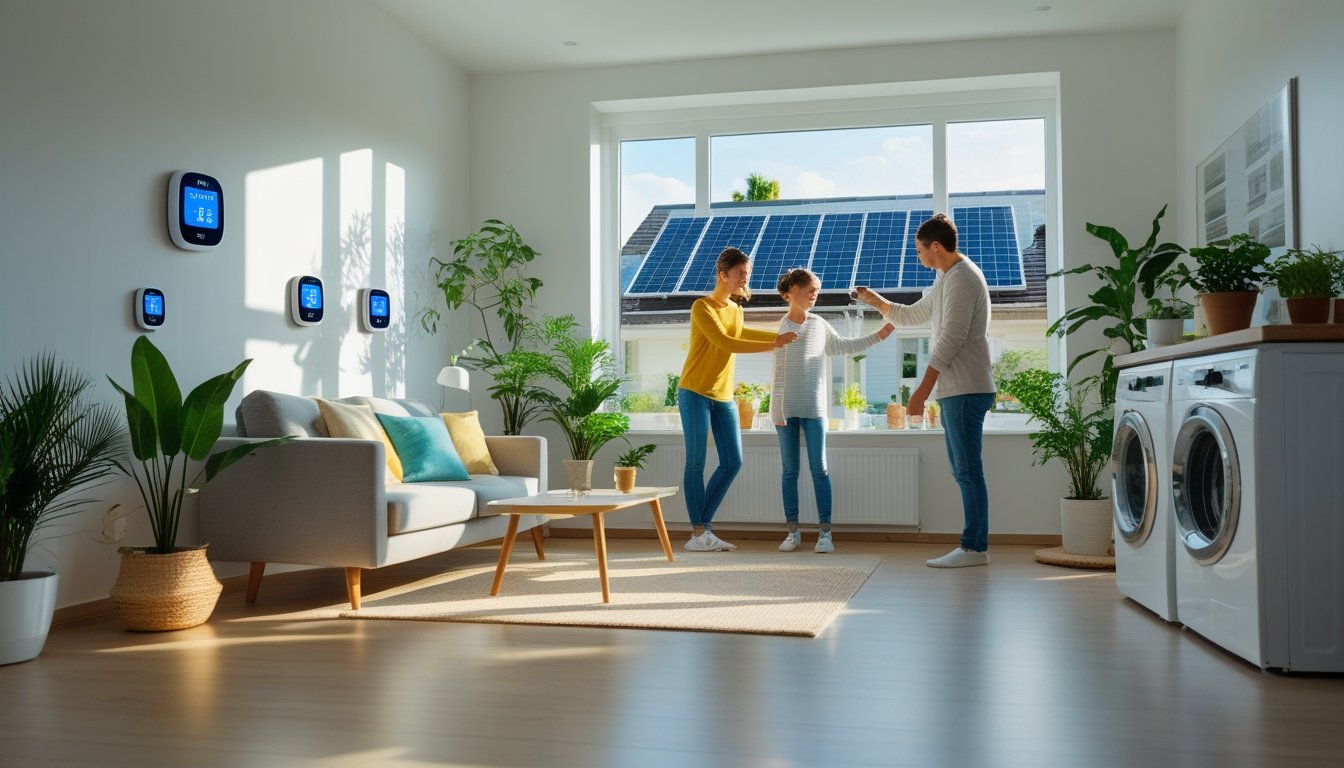Late updated: 20 Jul 2025 11:07
Written by: Sarah Hollister
Creative Ways To Reduce Household Energy Use: Smart Strategies for Everyday Savings
Amidst the hustle and bustle of our daily lives, increasing energy costs can often feel like an unavoidable burden. Yet, what if we could not only ease that financial strain but also contribute to a healthier planet? By embracing creative approaches to reducing household energy use, we can enjoy a variety of benefits, like cutting costs and decreasing our carbon footprint.

Our homes offer abundant opportunities to enhance energy efficiency with innovative practices. From simple adjustments such as optimising thermostat settings to integrating energy-efficient appliances and utilising natural light, the possibilities are compelling and varied. These actions not only save electricity but also enhance the overall comfort and sustainability of our living spaces.
The journey towards energy-efficient living doesn't have to be overwhelming. Incorporating sustainable habits can be simple, rewarding, and impactful. Together, let's explore these creative strategies that will transform our homes into eco-friendly havens.
Key Takeaways
- Creative methods reduce energy consumption and costs.
- Simple changes lead to increased home sustainability.
- Sustainable habits positively impact our daily lives.
Creative and Effective Ways To Reduce Household Energy Use

When it comes to reducing household energy use, focusing on lighting, appliances, and improving insulation and windows can make a significant impact. Utilising smart solutions and optimising heating and cooling systems are also key strategies.
Adopt Energy-Efficient Lighting and Appliances
Switching to LED bulbs and other energy-efficient lighting options can greatly reduce our energy consumption. LED bulbs use at least 75% less energy compared to traditional incandescent bulbs and can last up to 25 times longer, making them a cost-effective choice for lowering energy bills.
Investing in energy-efficient appliances, particularly those with an Energy Star rating, is another smart strategy. These appliances use up to 50% less energy than standard models, providing significant long-term savings on utility bills while also being kinder to the environment.
Smart Solutions for Minimising Phantom Loads
Phantom loads are the energy consumed by electronics even when they are turned off or in standby mode. To combat this, using a smart power strip can be incredibly effective. These strips automatically cut off power when devices are not in use, preventing unnecessary energy consumption.
A home energy audit may also help identify sources of phantom loads. We can unplug chargers and devices when not needed or use a master switch to disconnect multiple devices at once. This reduces energy waste and ultimately leads to lower energy bills.
Optimise Heating and Cooling
Optimising heating and cooling systems can significantly cut down on energy use. Installing a programmable thermostat or a smart thermostat allows us to set temperature schedules, ensuring systems only run when needed. These thermostats can reduce heating and cooling costs by up to 10% annually.
Regular maintenance, such as replacing air filters and servicing heat pumps, also keeps systems running efficiently. Additionally, using ceiling fans to circulate air and relying on natural ventilation can help minimise the need for mechanical heating and cooling.
Upgrade Insulation and Windows
Improving the insulation in our homes is crucial for maintaining desired temperatures and reducing heating and cooling demands. Adding or upgrading insulation in walls, attics, and floors can significantly enhance energy efficiency.
Installing energy-efficient windows, rated by the National Fenestration Rating Council, is also beneficial. Features like double glazing and weather stripping can minimise heat loss in the winter and reduce heat gain in the summer. These efforts collectively lead to lower energy bills and improved comfort year-round.
Innovative Habits and Sustainable Practices for Home Energy Savings
Reducing household energy use can be achieved through adopting innovative habits. These methods help cut down on costs and our carbon footprint. Renewable energy, efficient appliances, and simple lifestyle changes are key.
Harness Renewable Energy and Natural Light
Utilising renewable energy sources like solar panels is essential. Solar panels convert sunlight into electricity, significantly reducing energy bills. Installing these on our rooftops can provide a reliable energy source.
Natural light also plays a crucial role. Maximising sunlight through strategic placement of windows can reduce our dependence on artificial lighting. Simple adjustments, such as using light-coloured paints and window coverings that allow daylight while blocking harsh rays, are highly effective. By these means, we can efficiently harness energy from nature.
Smart Usage in Kitchens and Bathrooms
In the kitchen, efficient appliance use is paramount. Embracing devices like toaster ovens can save energy by replacing larger ovens for smaller meals. Opting for cold water in dishwashers and washing machines further conserves energy.
For bathrooms, a tankless water heater offers energy savings by heating water only when needed. Maintaining short showers not only conserves water but also reduces energy consumption. Installing low-flow showerheads can make a significant impact, reducing the volume of water used each day and contributing to our sustainable lifestyle.
Water Conservation Strategies
Water conservation directly impacts energy use. Implementing fixtures like low-flow showerheads and toilet flushers can drastically reduce water usage. Drying racks and clotheslines help avoid excess use of electric dryers.
Choosing native plants that require minimal watering for gardens is another effective measure. By practising water-saving habits, such as fixing leaks and shorter showers, we contribute to energy conservation and sustainable living. These measures collectively reduce our household energy demands and carbon footprint, promoting a greener future.
Simple Lifestyle Changes for Lasting Impact
Everyday habits make a notable difference. Turning off lights when leaving a room and unplugging devices not in use are basic yet impactful practices. Utilising drying racks and clotheslines instead of dryers saves electricity.
Consistently adjusting our daily routines, like taking stairs instead of lifts, also adds up to significant energy savings. Our commitment to these simple changes cultivates a long-term reduction in energy consumption, empowering us to live more sustainably. As we embrace these habits, we find ourselves not only saving money but also contributing positively to the environment.
Frequently Asked Questions

In this section, we tackle common questions about reducing household energy usage effectively. Our focus is on practical strategies, efficient practices, and smart solutions.
What are some effective methods to decrease electricity usage in residential areas?
In residential areas, using energy-efficient appliances is key. Installing LED bulbs, smart thermostats, and optimising natural light reduces electricity usage. Unplugging devices when not in use also contributes to savings.
How can one conserve energy within their home throughout the year?
Energy conservation can be year-round. We can seal windows and doors to prevent drafts in colder months. During warmer seasons, using fans instead of air conditioning saves energy. Regularly maintaining heating and cooling systems optimises their efficiency.
Which household appliances consume the most energy, and how can their impact be minimised?
Refrigerators and air conditioners typically consume the most energy. To reduce their impact, ensure your refrigerator is full but not overcrowded. Set air conditioners at efficient temperatures. Regular cleaning and maintenance improve appliance efficiency.
What daily habits contribute to high household energy consumption, and how can they be altered?
Leaving lights on unnecessarily and overusing heating or cooling systems are common habits. We can alter these by turning off lights when leaving a room and adjusting thermostat settings in small increments.
Can you suggest any smart home upgrades that lead to significant energy savings?
Investing in smart home technologies offers major savings. Smart thermostats, automated lighting, and energy-efficient appliances allow for better control and monitoring. These upgrades adjust to our usage patterns, increasing efficiency.
How does home insulation play a role in conserving energy, and what are the best practices?
Proper insulation prevents heat loss and improves comfort. We recommend insulating the attic, walls, and basement. Using materials with high R-values increases efficiency. Weatherstripping and caulking further seal the home, preventing energy waste.
